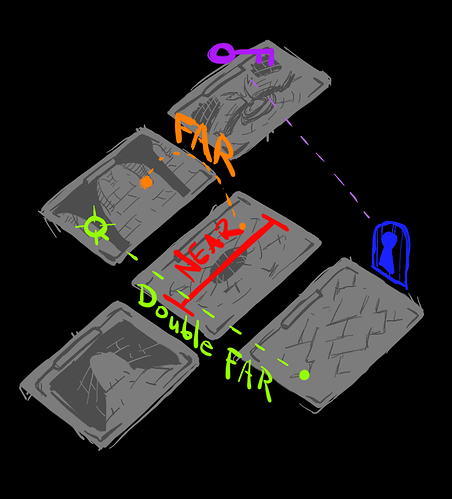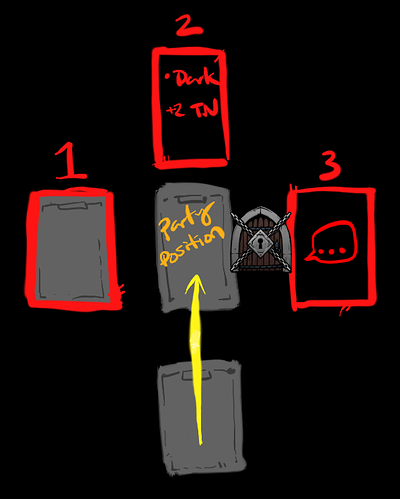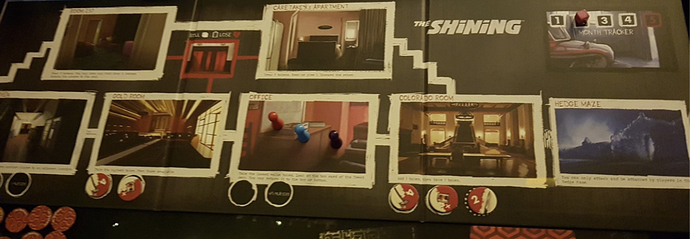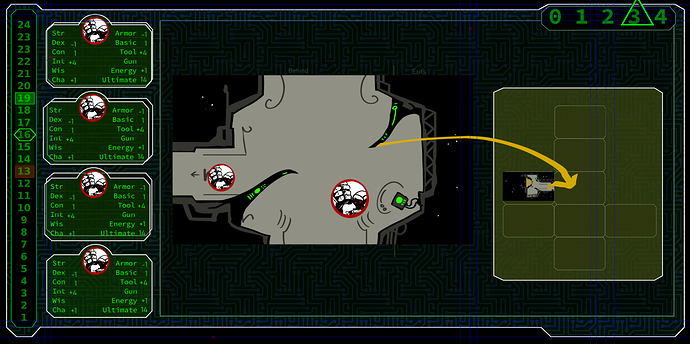Runehammerians!
I wanted to get some feedback on a movement-tracking concept. I’m working some low-prep combat mapping concepts out of some familiar territory, namely using Zones and CLOSE/NEAR/FAR reference.
I’ve started to try out using cards to track areas and movement:
-
Anywhere on a card is Near
-
Adjacent cards are Far
-
Cards beyond that are Double Far and beyond
I’ve started to write down bullet points on the cards for what’s present in the Near area: stacks of wooden boxes, tattered banners hanging on the walls, etc. These can be as thematic/detailed as someone wants. Nothing new here if you’re familiar with Zones. I like sprawling narrative scenes and big maps are too clunky and time consuming to create.
Players can move into an area by dropping their token on the card, and they can treat any other token on the card as Close or Near. Close becomes negligible since players just run up and attack when they want to, and since tokens on a card are all Near everyone is reachable by closing in to attack.
The goal is to make a model that supports environmental narrative, takes very little prep time, and allows maximum flexibility so folks aren’t chasing down pre-made maps that fit their concept (or worse yet, changing their concept to fit a “cool map” they found). It also has to be compatible with ICRPG’s model of play. None of this is new, but the presentation/method of the disjointed pieces may be.
Yay? Nay? Since it’s a pretty familiar set up it’s basically 1:1, but maybe there are some pitfalls I don’t see just yet. I’m working on a setting using this method and before I get too deep I want to make sure it doesn’t break down anywhere before it begins.








 When you move, place your mini so that it touches your destination.
When you move, place your mini so that it touches your destination.